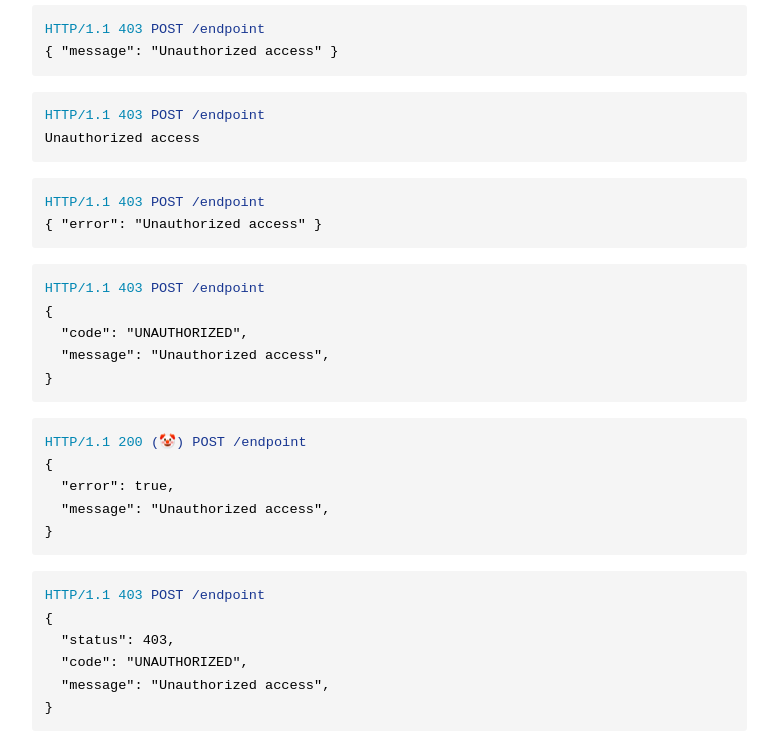131
you are viewing a single comment's thread
view the rest of the comments
view the rest of the comments
this post was submitted on 30 Aug 2024
131 points (99.2% liked)
Programming
17710 readers
130 users here now
Welcome to the main community in programming.dev! Feel free to post anything relating to programming here!
Cross posting is strongly encouraged in the instance. If you feel your post or another person's post makes sense in another community cross post into it.
Hope you enjoy the instance!
Rules
Rules
- Follow the programming.dev instance rules
- Keep content related to programming in some way
- If you're posting long videos try to add in some form of tldr for those who don't want to watch videos
Wormhole
Follow the wormhole through a path of communities !webdev@programming.dev
founded 2 years ago
MODERATORS


1 or 4 but wrapped in a top level error object. It’s usually best to not use the top level namespace because then you can’t add meta details about the request easily later without changing the original response schema.
Codes are great but I’m usually too lazy to introduce them right away, so I instead have message (which is guaranteed to come back) and context, which is any JSON object and doesn’t adhere to a guaranteed structure. Another poster pointed out that code is way easier for localization since you are probably not localizing your message.
The HTTP status code is generally sufficient to describe what happened without having to catalogue every error with a unique “code”. A context blob is useful for dumping validation errors or any other details about the error that a human could at least rely on for help.
Putting the status code on the body seems helpful but is actually useless, since the only place you can assume it’s always provided is on the response itself and not the body.